It remains iconic for its strong inverted gull wing and fixed landing gear.
It was employed in every theater in which Germany was engaged.
Enter the Dive Bomber
The technique of dive bombing began in the early days of military aviation.
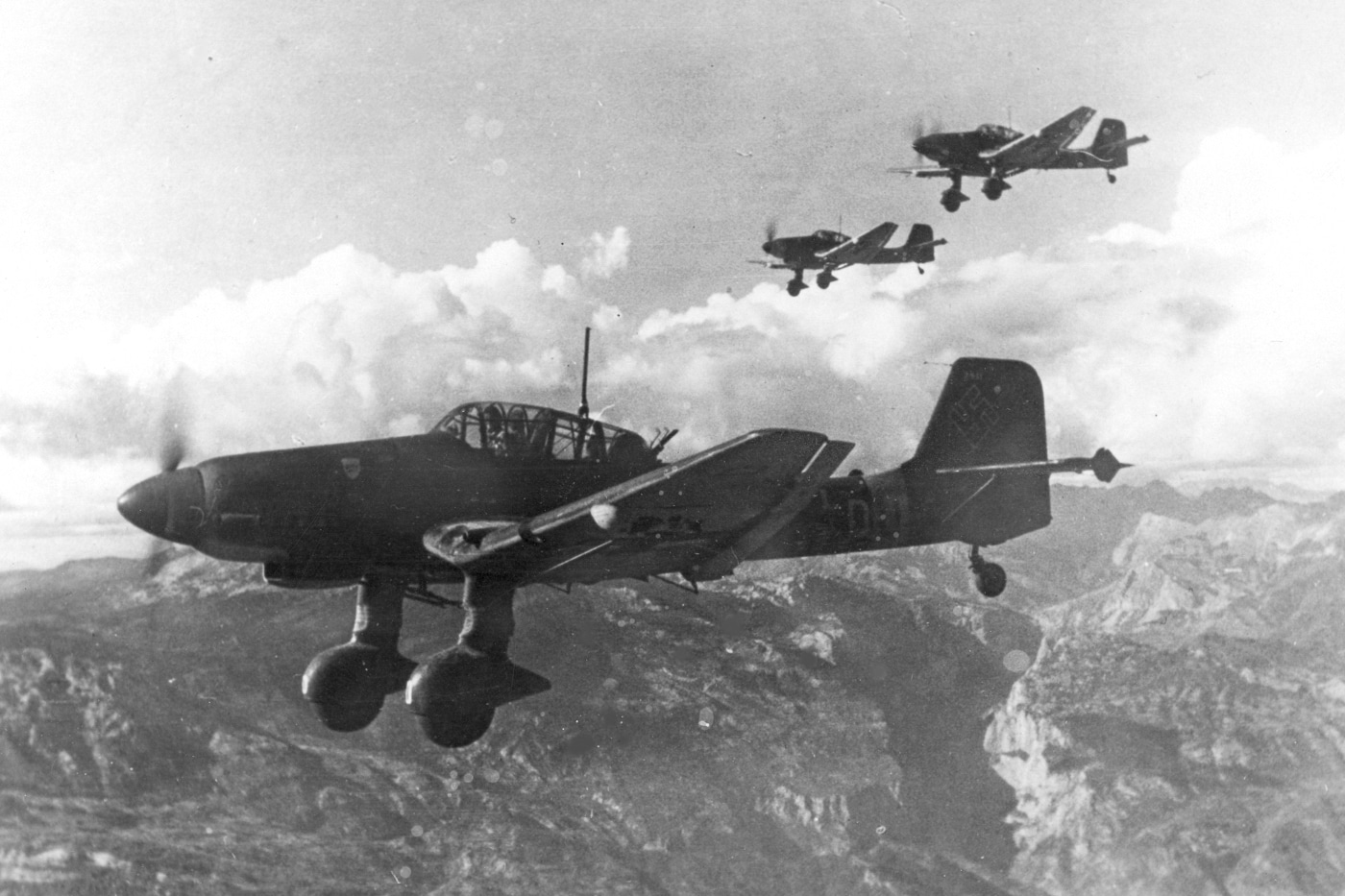
Three Junkers Ju 87D dive bombers fly to attack Yugoslavian partisan positions in the mountains of Montenegro. Image: Polish State Archives
One of the first purpose-designed dive bombers was the German Junkers K 47.
It was later modified to a more conventional single-fin design after the twin fins collapsed and the aircraft crashed.
The Stuka had a crew of two including the pilot and the rear gunner/radio operator.
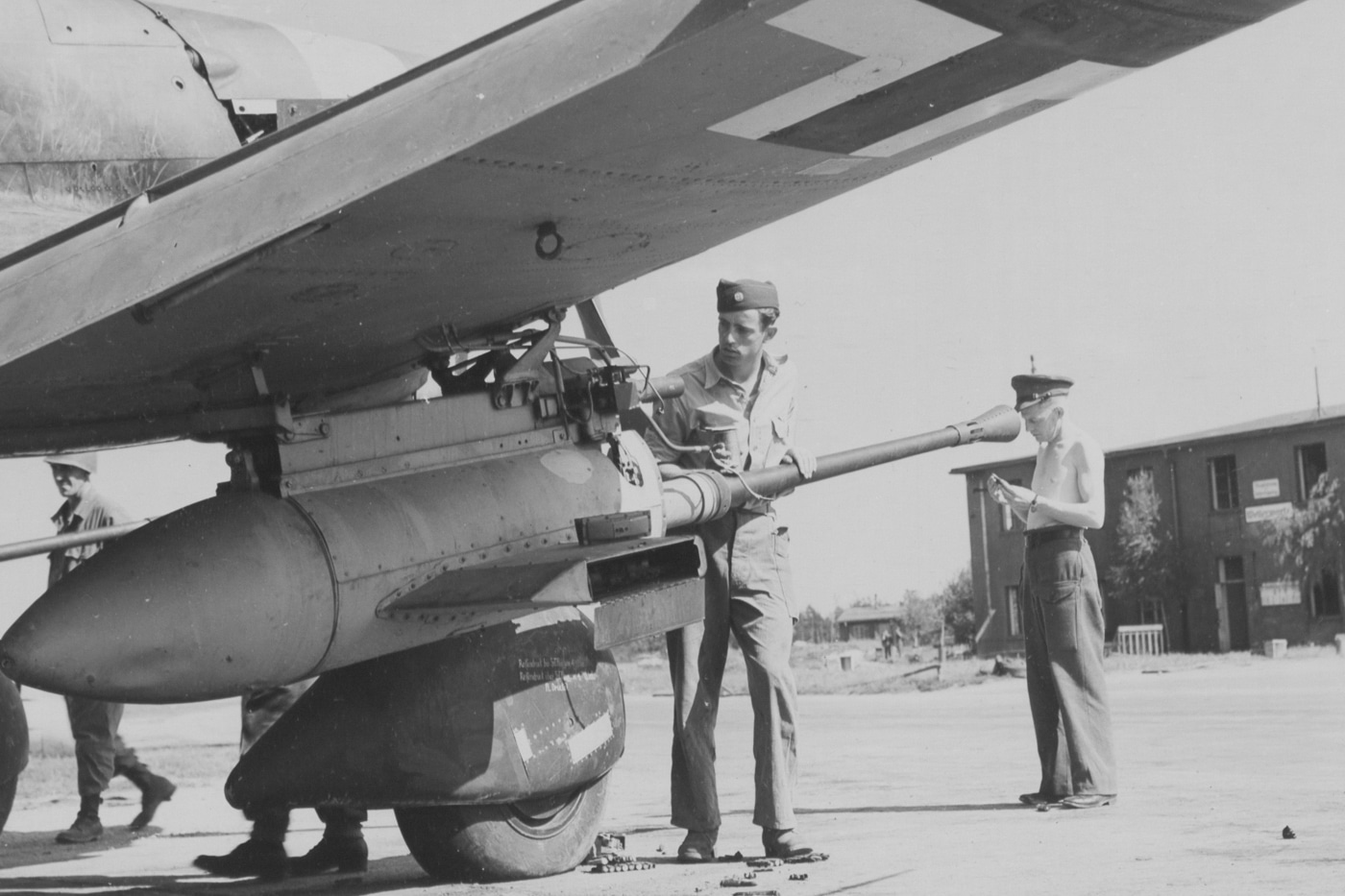
Later version of the Ju 87 were equipped with 37mm gun pods to attack enemy armor. In this photo, Americans examine a captured Stuka. Image: NARA
The rear gunner/radio operator operated one 7.92 mm (.312 in) MG 15 machine gun for defensive purposes.
In reality, the German troops were able to test a number of new weapons platforms and new tactics.
The Stuka was one such platform and it proved outstandingly effective.
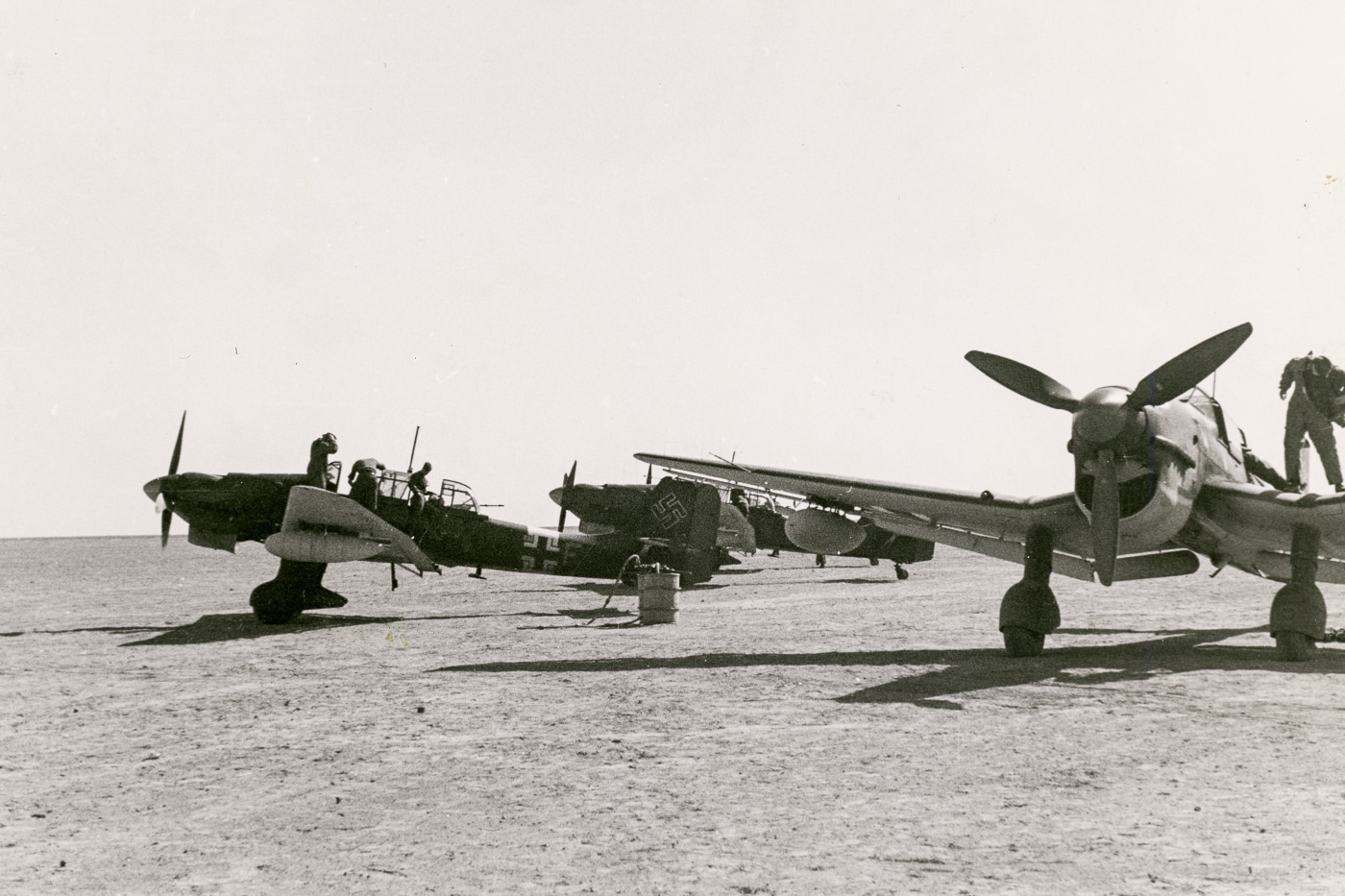
These Stukas are prepared for combat during Germany’s invasion of France, circa May 1940. Image: Gen. Erwin Rommel’s Campaigns in France/NARA
Despite its remarkable combat debut, Junkers continued to refine and improve upon the design.
That included the addition of sirens dubbed Trumpets of Jericho to the landing gear.
Notably, three Stukas were employed in the first combat mission of the Second World War.
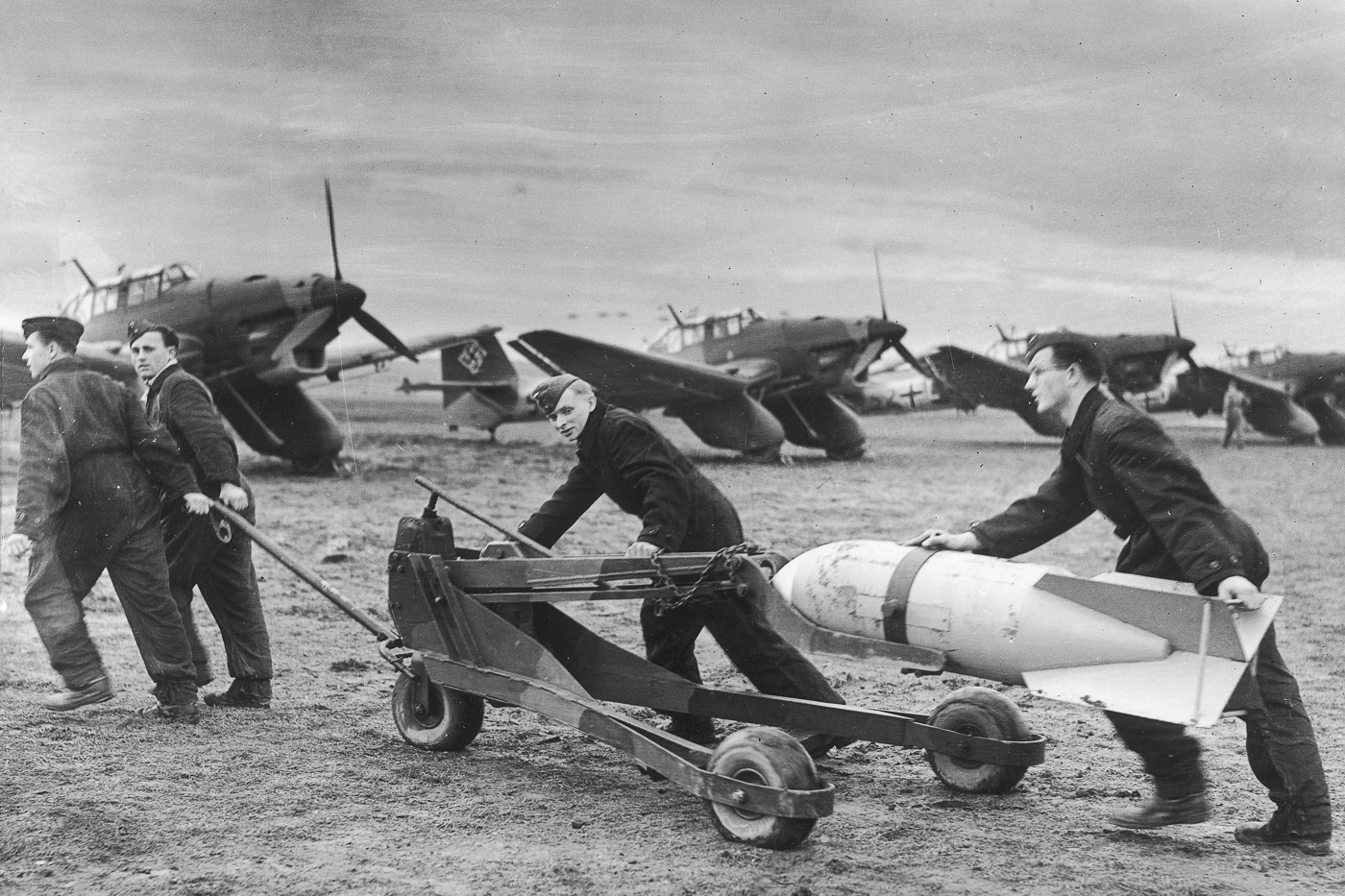
A ground crew transports a bomb by trolley to their Ju 87 A in preparation for a mission. Image: Polish State Archives
However, the dive bomber concept was most effective when the Germans had air superiority.
That resulted in the Ju 87R, which was equipped with underwing fuel tanks.
It also received the more powerful Jumo 211 powerplant.
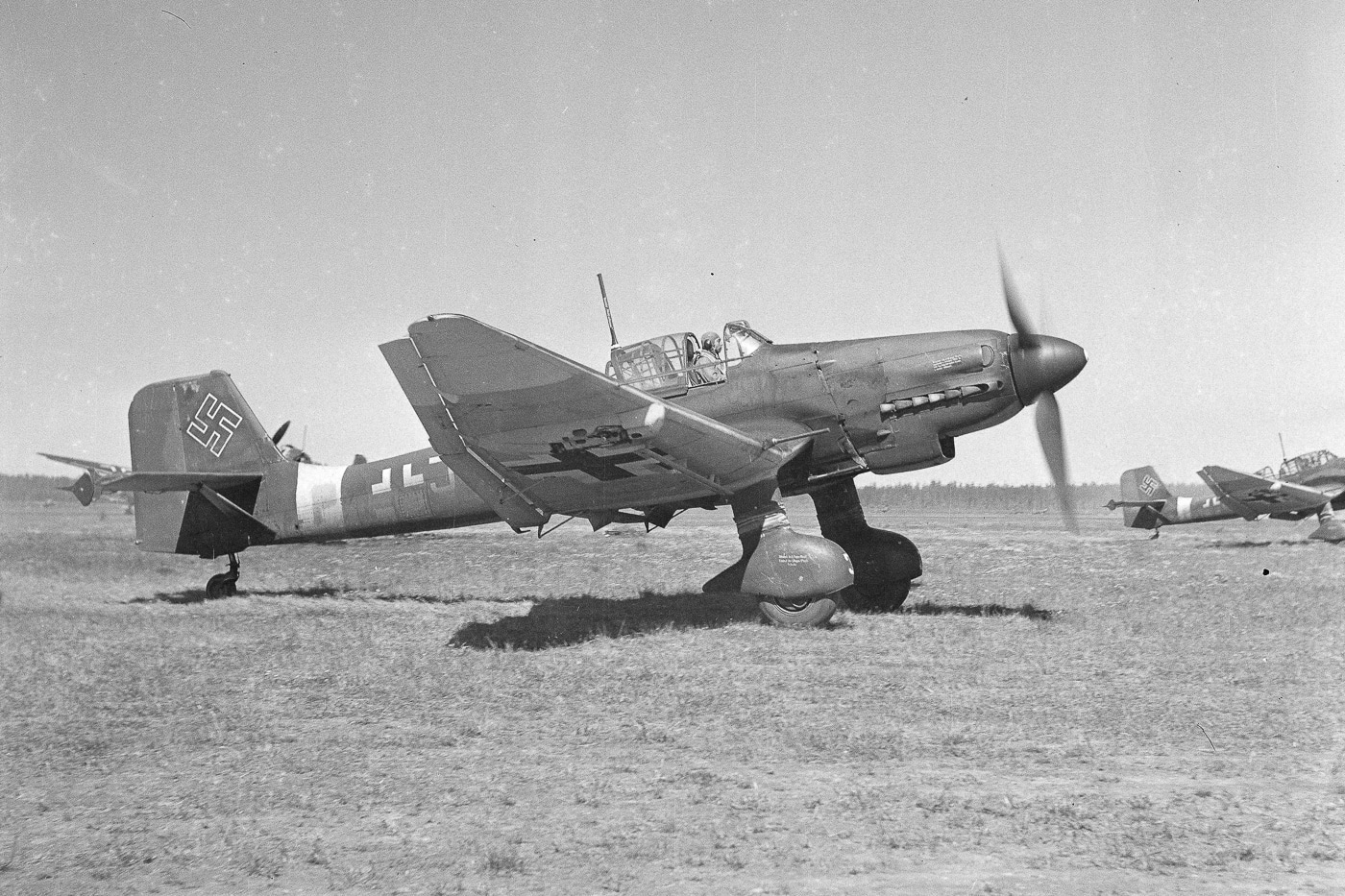
This German Stuka taxis off the runway following a successful bombing flight against Soviet troops on the Karelian Isthmus. The mission was supporting Finland during the Continuation War. Image: SA-kuva
By 1943 the losses were so great that the aircraft was shifted to a night assault role.
However, it was also used in an anti-partisan role in Yugoslavia until the very end of the war.
However, the flattop was never completed and therefore there was no need for a special carrier-based variant.
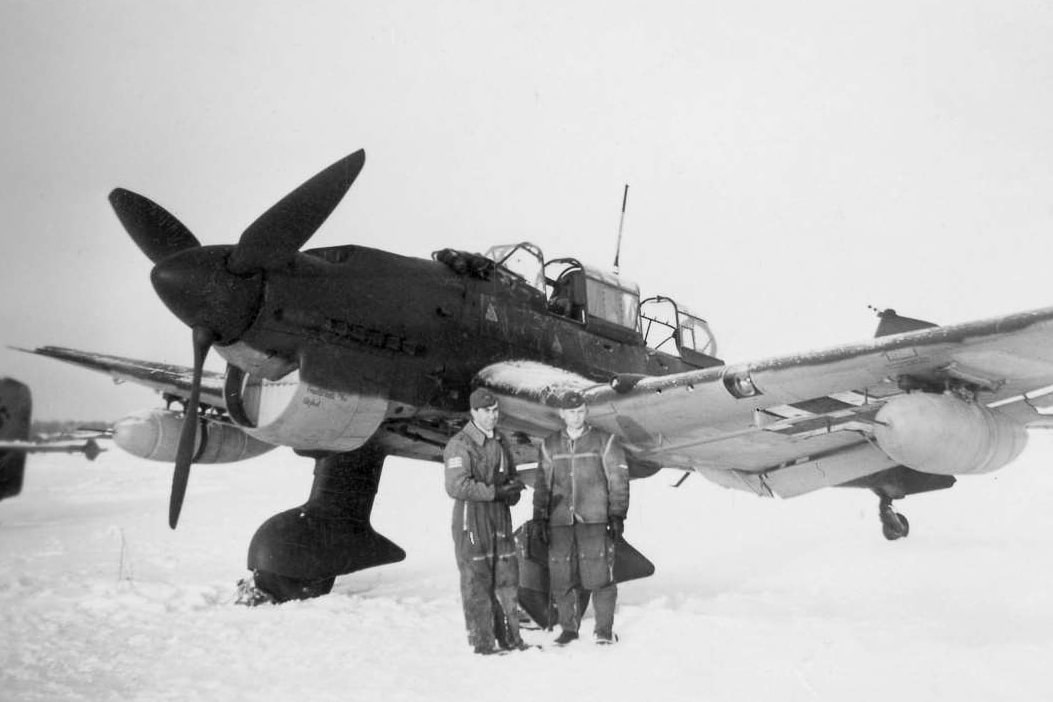
A Luftwaffe Junkers Ju 87 Stuka at the Malmi airport during the Continuation War. Located near Helsinki, Malmi was operated by the Finnish Air Force until the war’s end. Image: SA-kuva
The Stuka would have likely been too antiquated to be truly effective as a carrier-based aircraft.
One particularly notorious pilot of the Ju 87G was Hans-Ulrich Rudel.
In addition, he has been credited with destroying 519 tanks in the course of 2,530 missions flown.
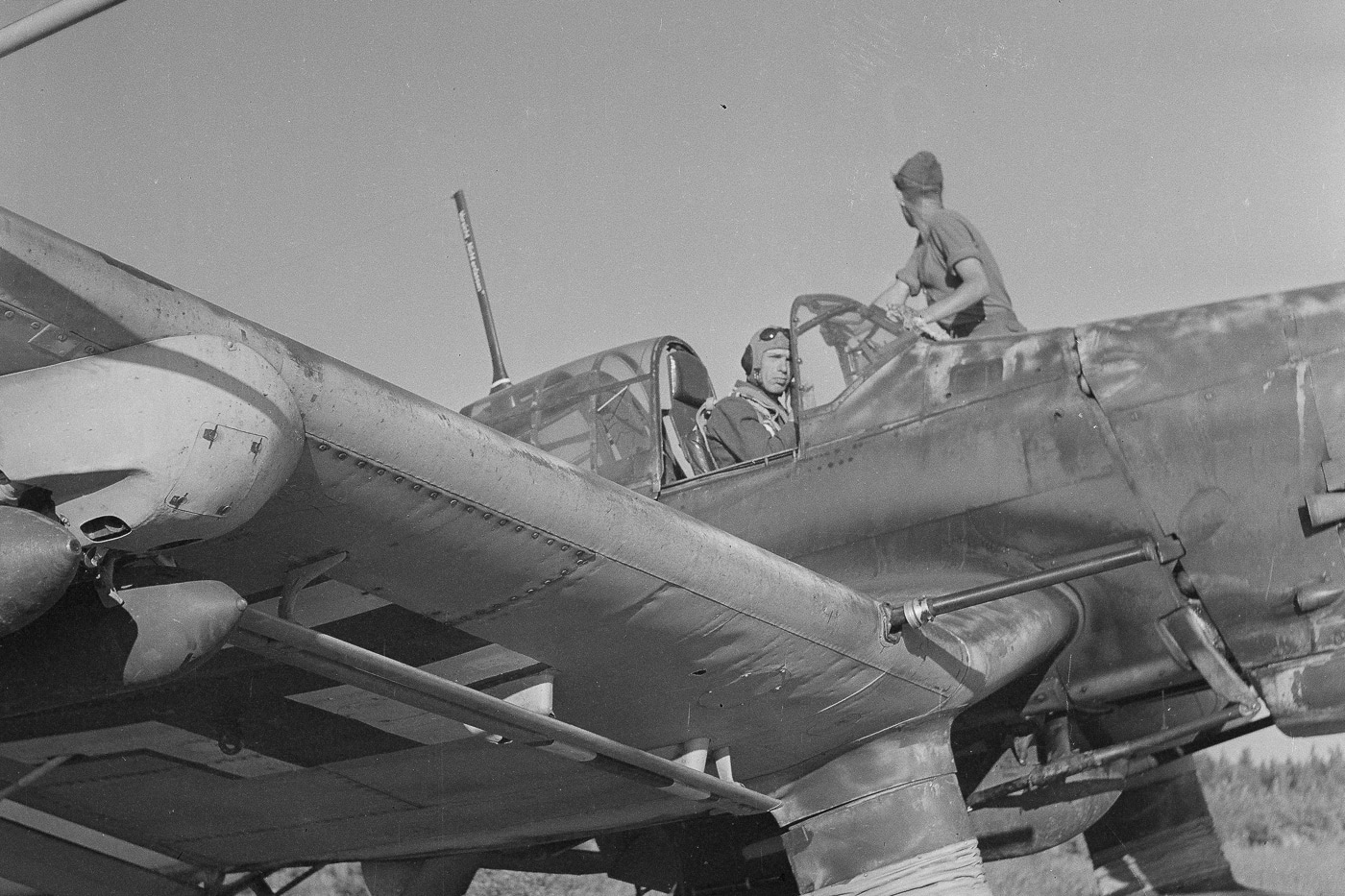
In mid-1944, a German pilot prepares his Stuka dive bomber for take off. Image: SA-kuva
Though he was also shot down 30 occasions, he always returned to action.
The last Stukas came off the production line in September 1944.
Today, only two survive intact while efforts are underway to restore a third.
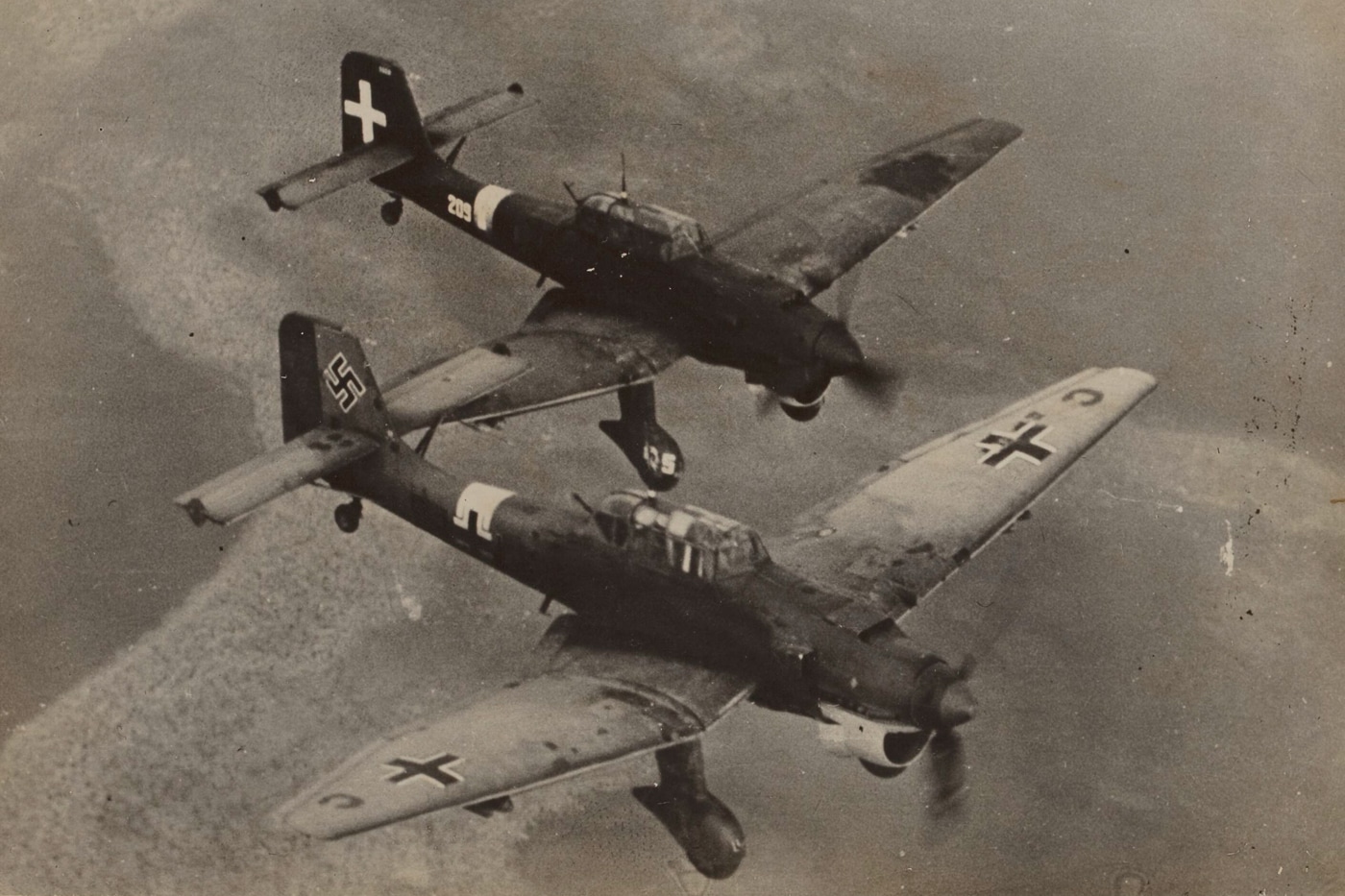
A German and Italian Stuka fly together towards an Allied target. Image: Netherlands National Archive
These include a ground-attack variant that is now on display at the Royal Air Force Museum outside of London.
Those modifications were later removed, and it has been restored to its G-2 configuration.
Restoration was completed in the mid-1970s.
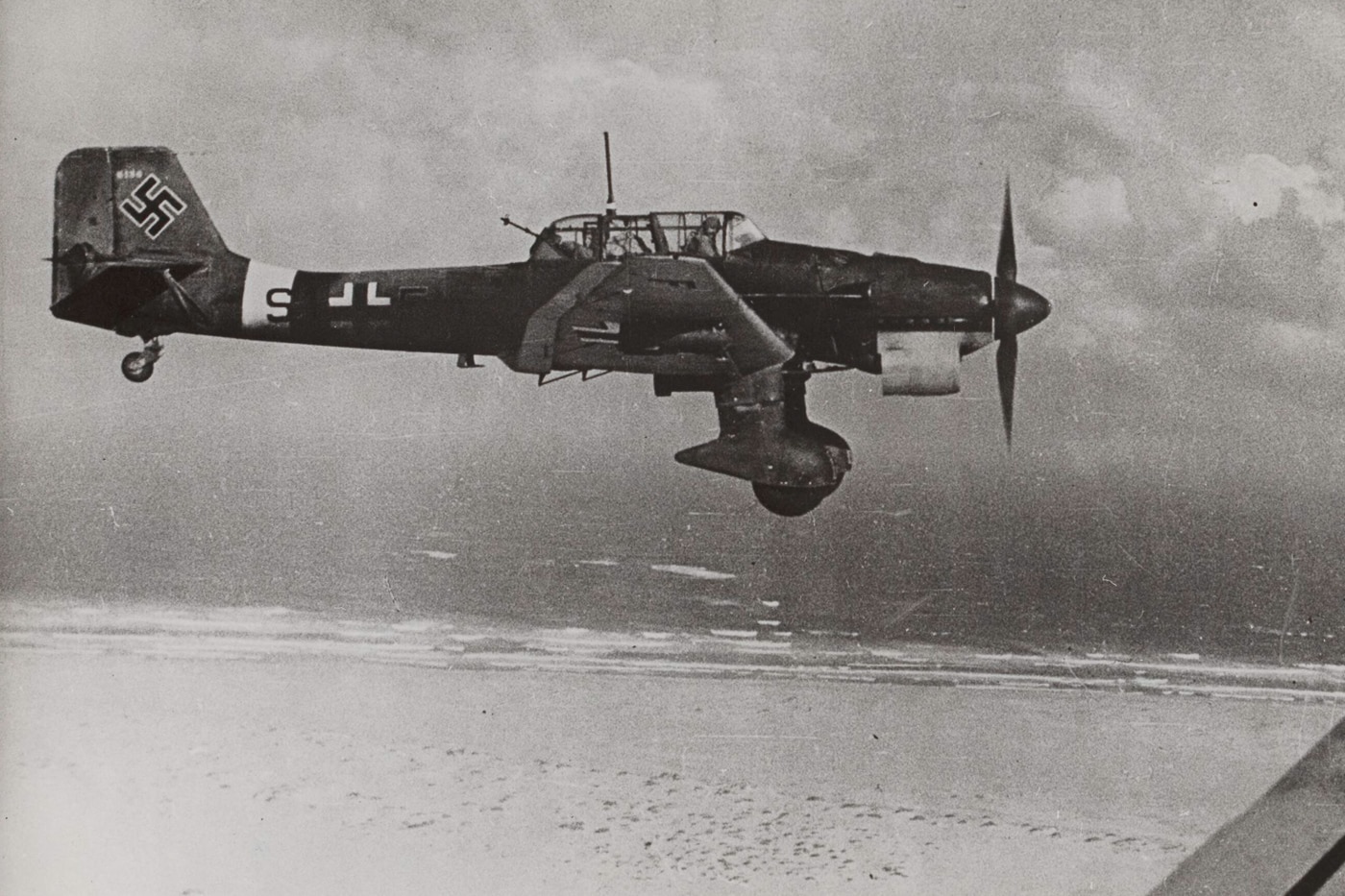
A German Stuka in flight above a North African beach on the Mediterranean Sea. Image: Netherlands National Archive
In addition, several wrecked aircraft have been preserved.
Even though few Ju 87s remain today, the legend of the terrifying dive bomber lives on.
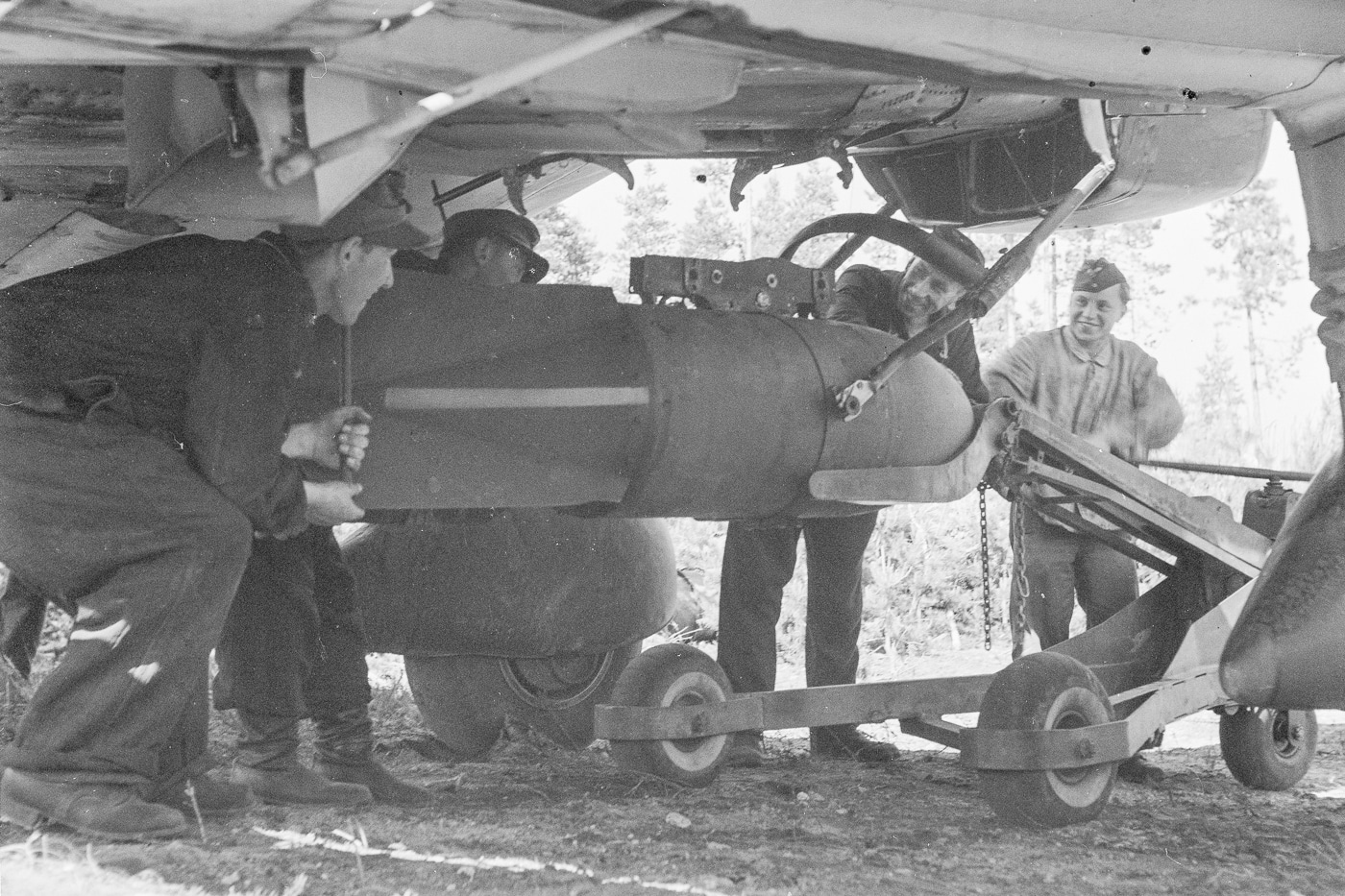
A 250 kg bomb is lifted onto a Stuka frame hanger using a bomb crane. The bomb is already attached to a “fork” whose function is to prevent the bomb from touching the propeller. Image: SA-kuva

A 50 kg bomb is attached to the wing of a Stuka dive bomber. A total of four of these bombs could be attached to the plane’s wings. Image: SA-kuva
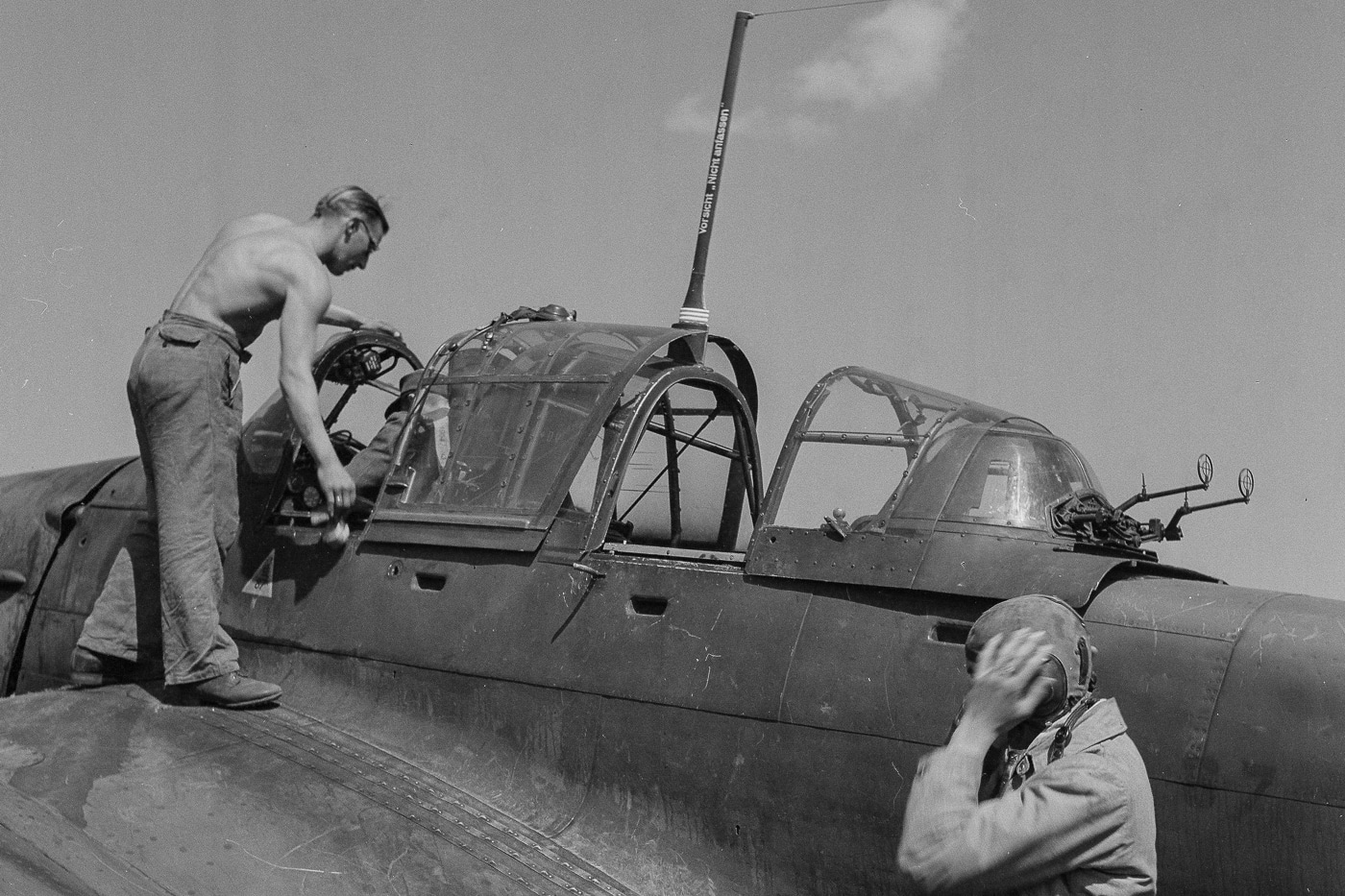
A Stuka dive bomber crew prepares for a bombing mission to destroy the bridges in the Battle of Tali–Ihantala. The pilot of the Ju 87 D-5 is already in the plane. Image: SA-kuva
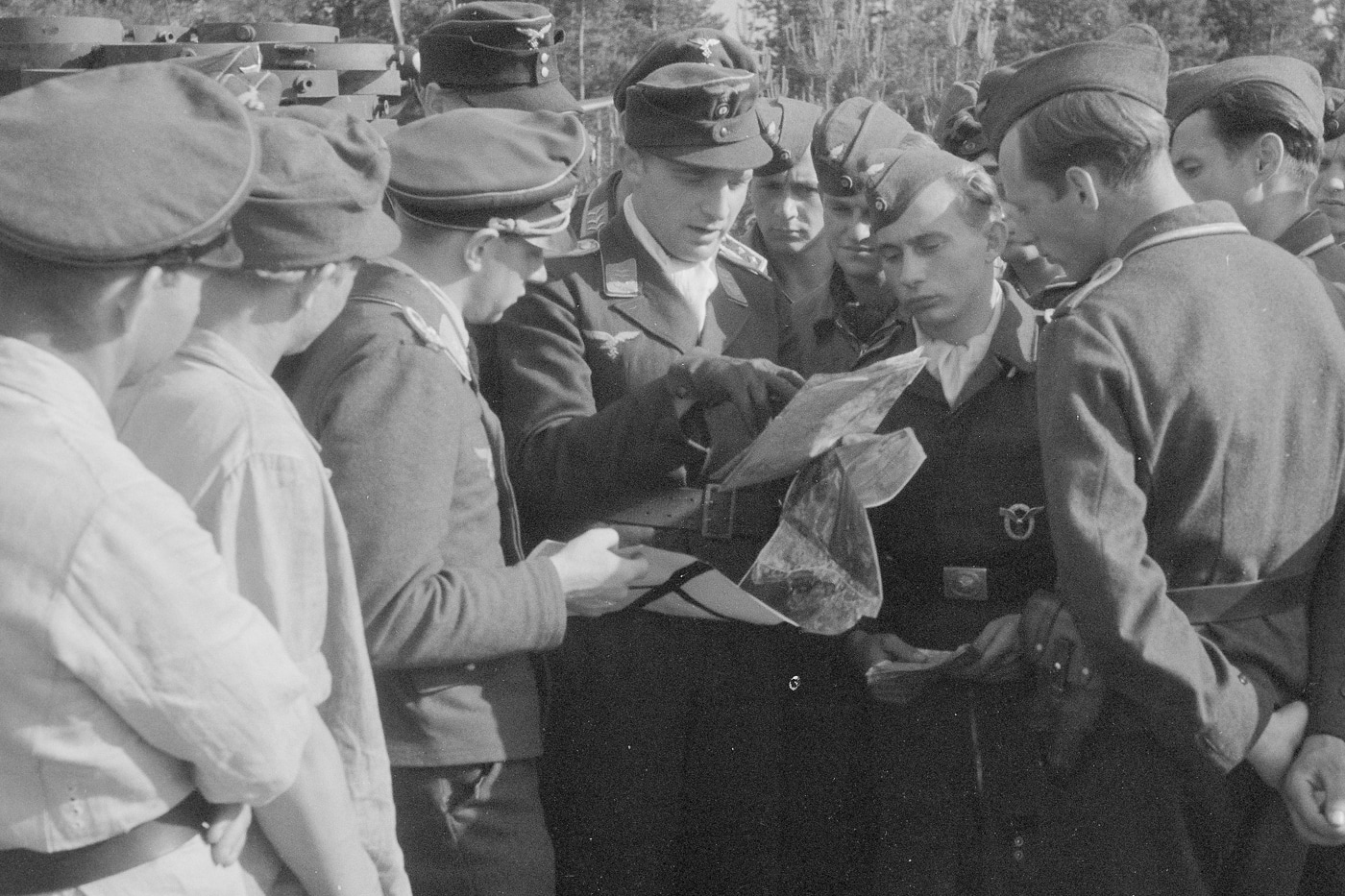
The commander of several Stuka dive bomber squadrons, Oberleutnant Hans Töpfer, gives the pilots a situation report and mission briefing on June 28, 1944. Image: SA-kuva

Stuka dive bombers take off from an airfield in Finland to attack Soviet troops. Image: SA-kuva
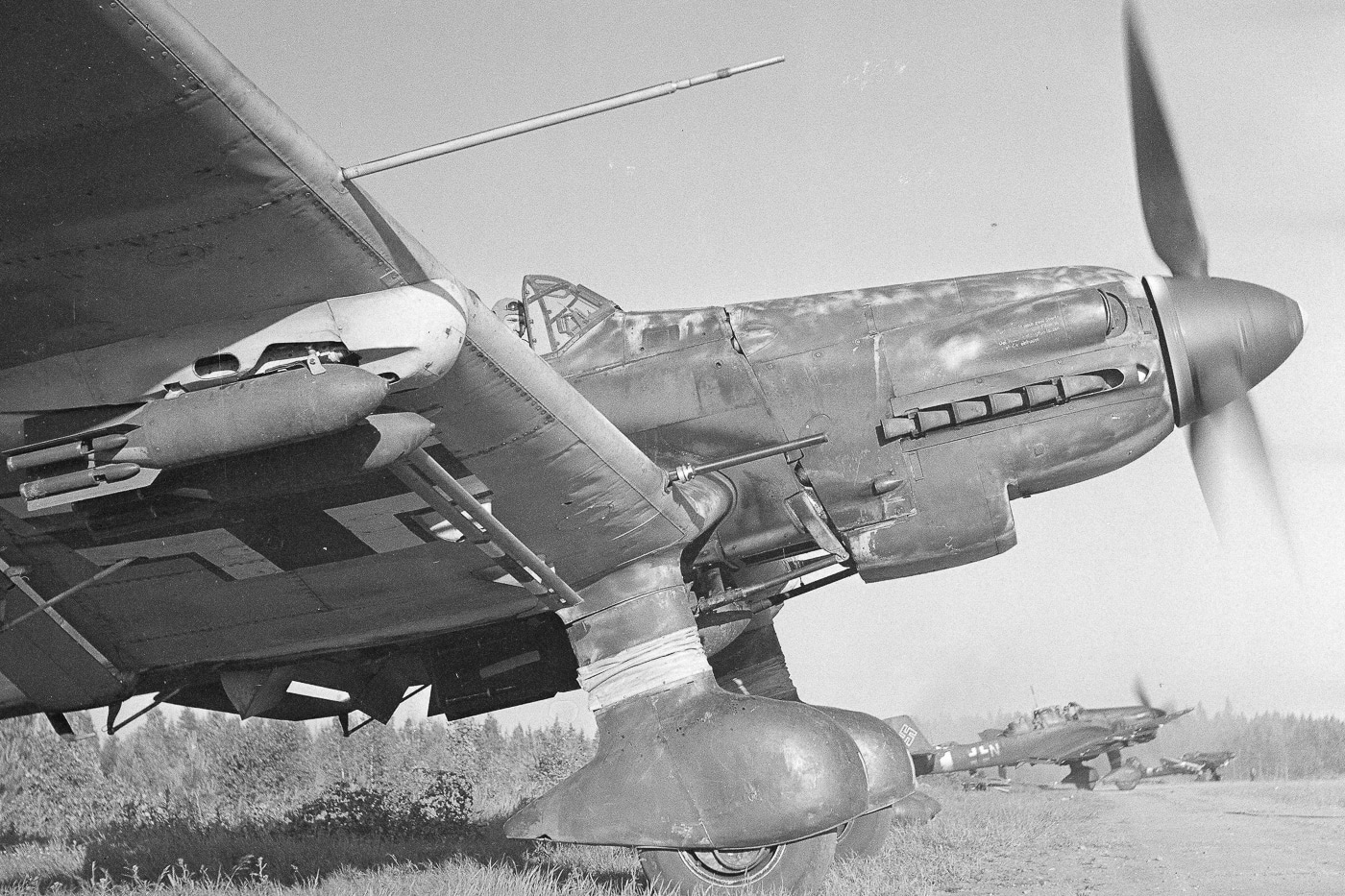
A Junkers Ju 87 D-5 Stuka dive bomber taxis for a bombing flight against Soviet troops in Finland. Image: SA-kuva

This prototype Junkers Ju 87c Stuka was intended for use by the Kriegsmarine on aircraft carriers. It had folding wings and an arrestor hook visible forward of the rear wheel.
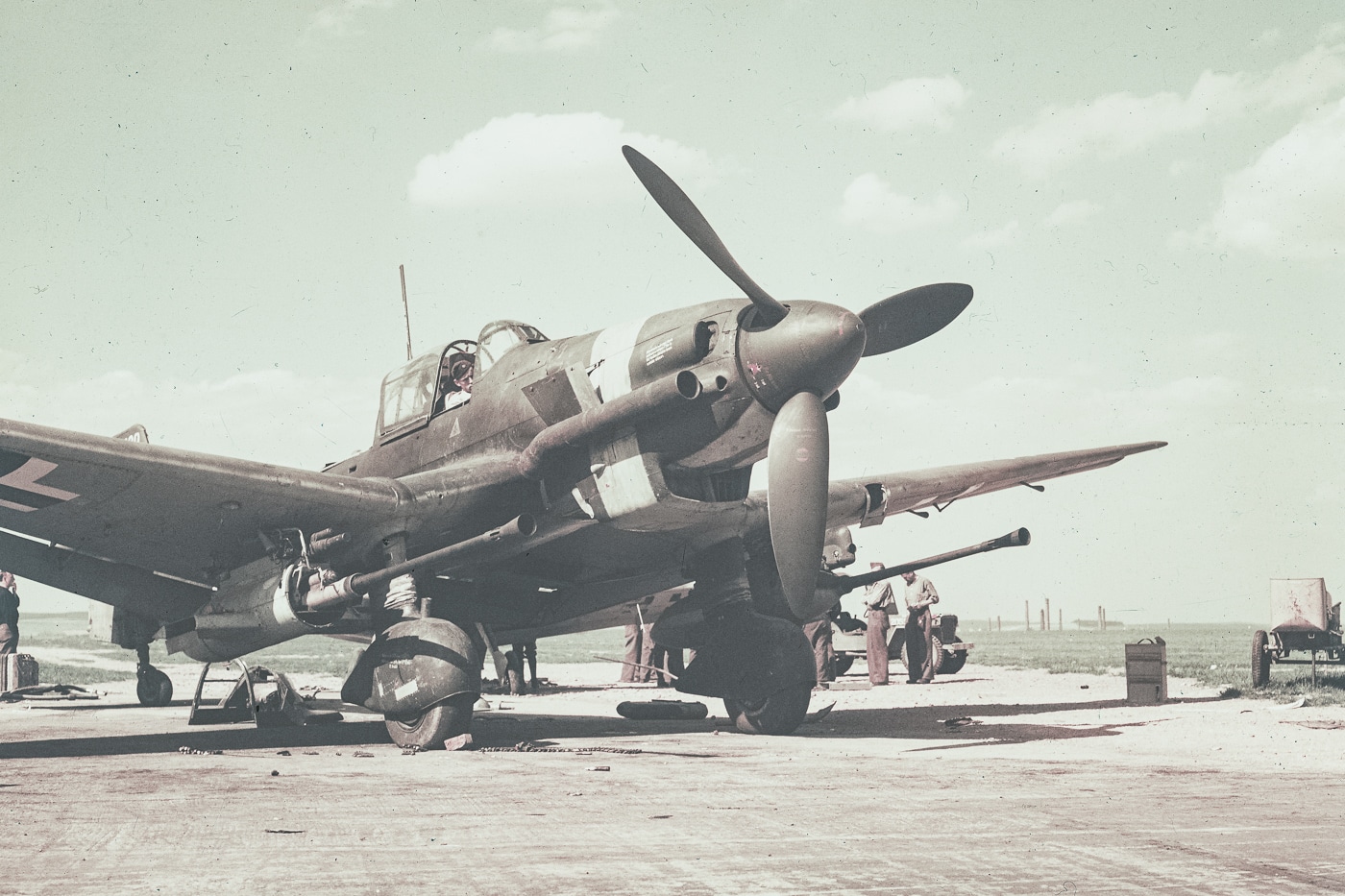
This German Ju 87G Stuka was captured at an airfield in Pilsen, Czechoslovakia. It is examined by an American sergeant. It’s 37mm antitank guns are visible under each wing. Image: NARA

From this angle, you can see the 37mm gun pod used by Germany to turn the Stuka into a tank buster. Image: NARA
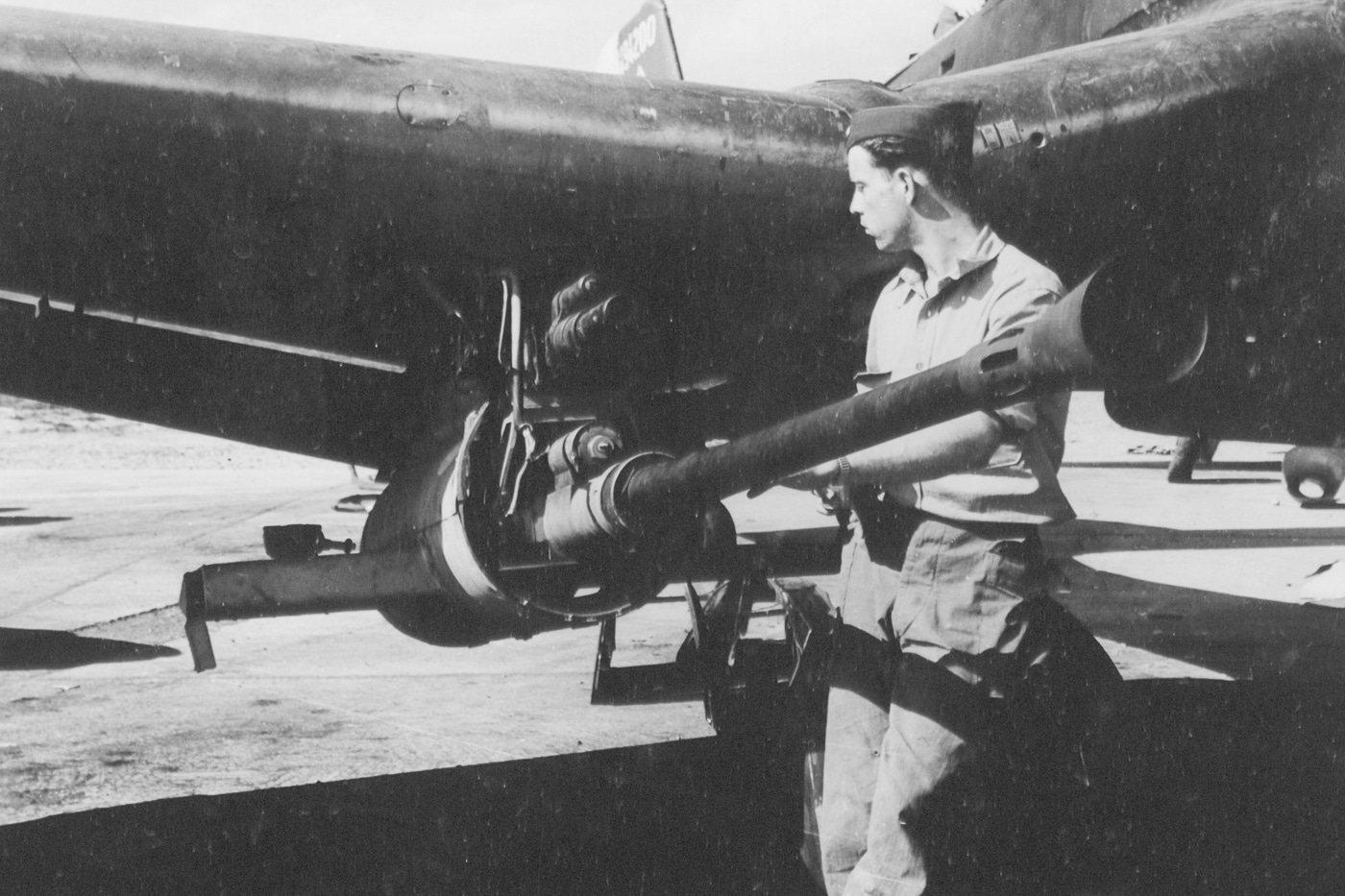
Staff Sgt. Charles Culver of Rosser, Texas, examines a 37mm cannon attached to the wing of a German JU 87 Stuka at an airfield in Eastern Europe. Image: NARA
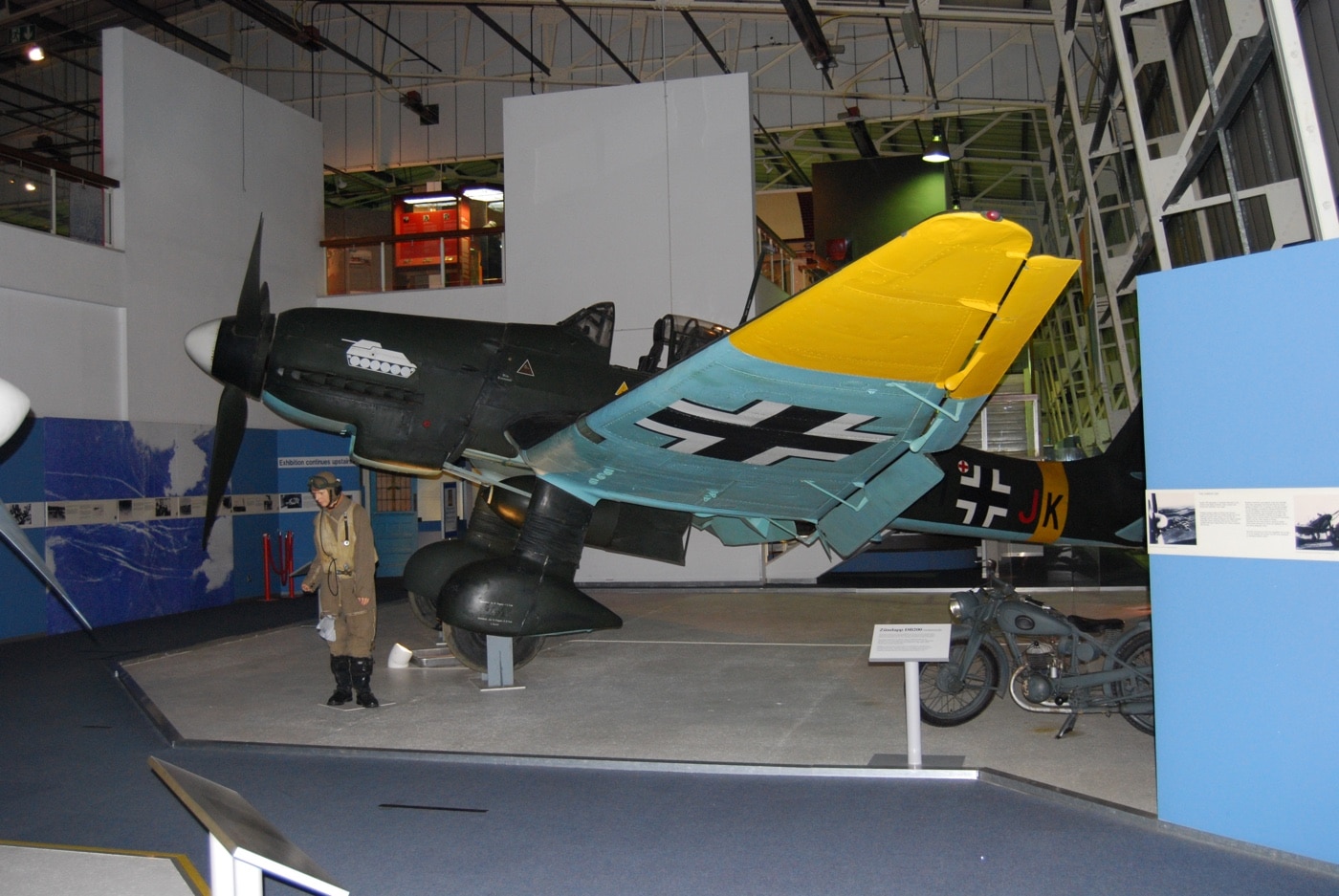
Shown is one of the two surviving Stukas. This one is in the collection of the RAF Museum outside of London. Image: Author
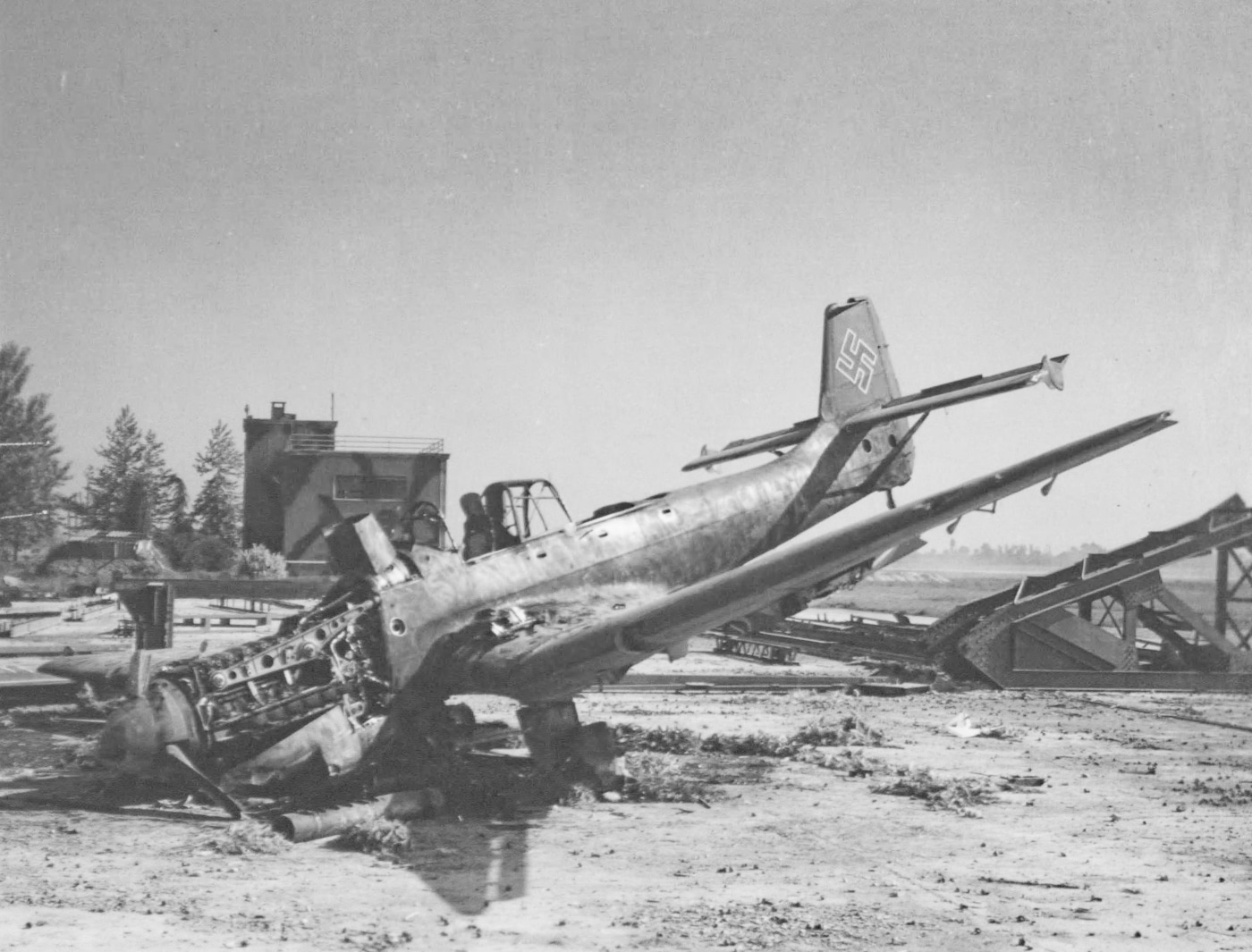
This Stuka Ju 87 was damaged in Vicenza, Italy during a U.S. Army Air Force bomber raid late in the war. Image: NARA
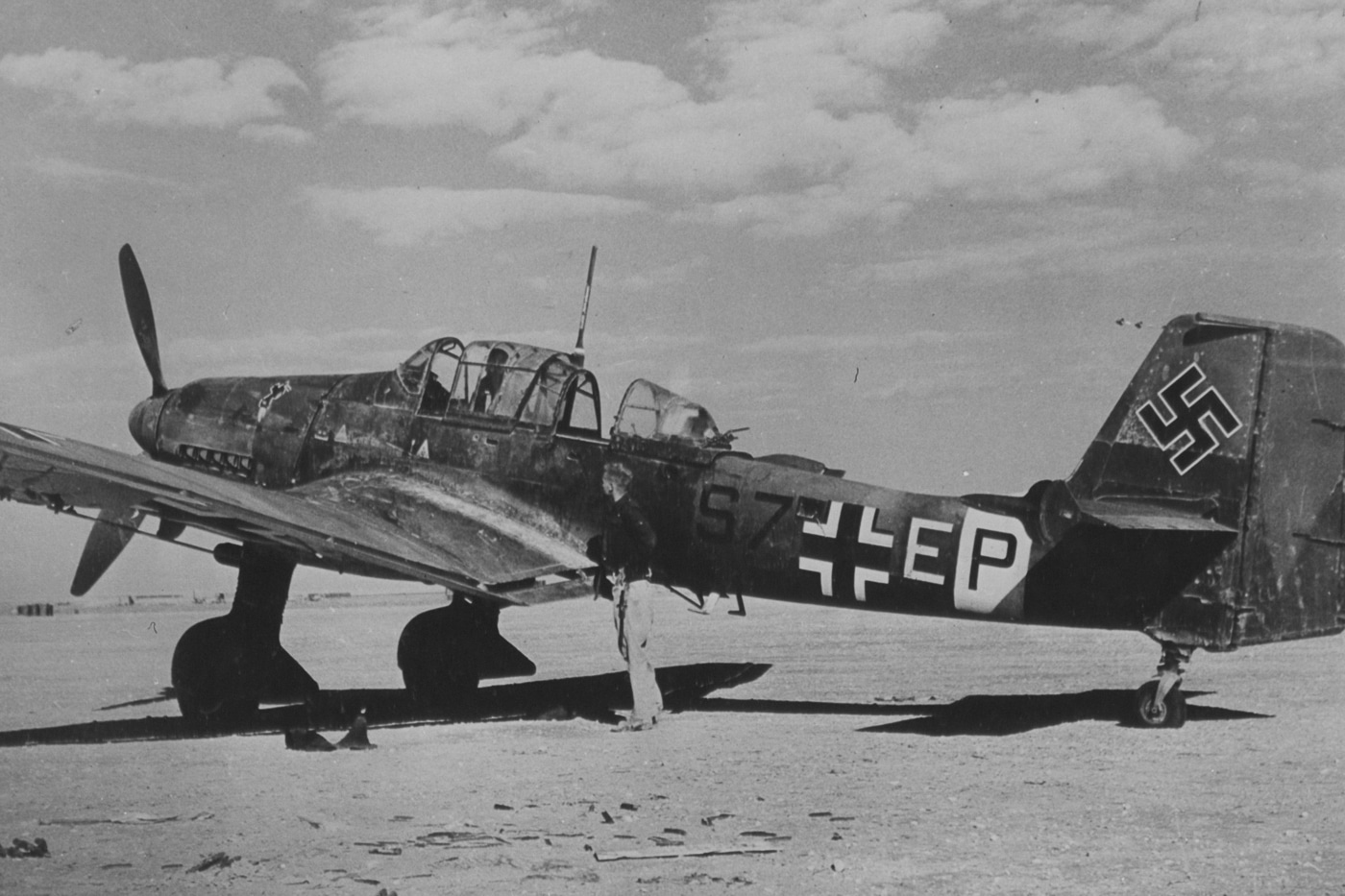
Members of the U.S. Army Air Force inspect a Stuka left behind by retreating Germans somewhere in North Africa. Image: NARA




